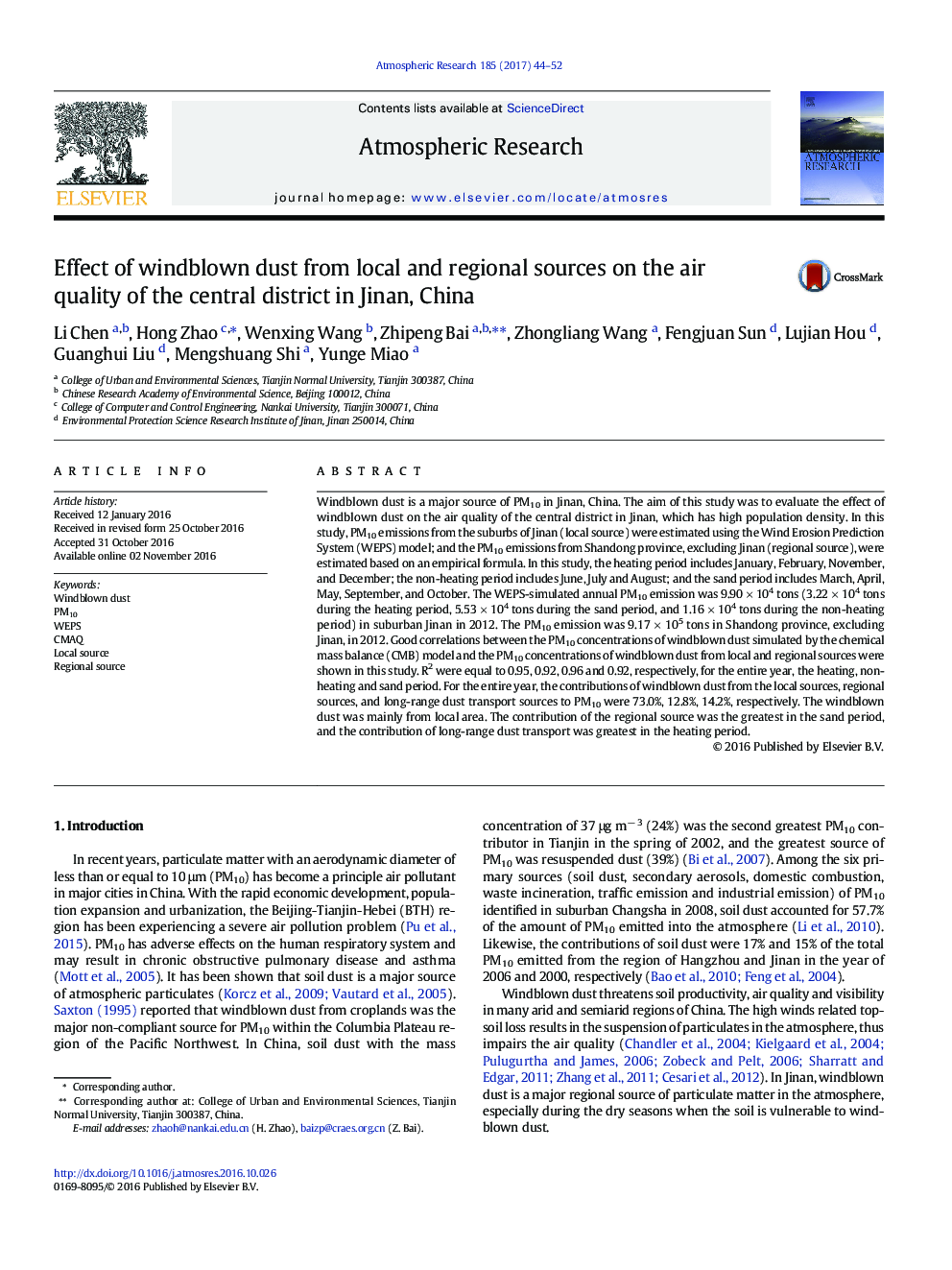| Article ID | Journal | Published Year | Pages | File Type |
|---|---|---|---|---|
| 5753692 | Atmospheric Research | 2017 | 9 Pages |
Abstract
Windblown dust is a major source of PM10 in Jinan, China. The aim of this study was to evaluate the effect of windblown dust on the air quality of the central district in Jinan, which has high population density. In this study, PM10 emissions from the suburbs of Jinan (local source) were estimated using the Wind Erosion Prediction System (WEPS) model; and the PM10 emissions from Shandong province, excluding Jinan (regional source), were estimated based on an empirical formula. In this study, the heating period includes January, February, November, and December; the non-heating period includes June, July and August; and the sand period includes March, April, May, September, and October. The WEPS-simulated annual PM10 emission was 9.90Â ÃÂ 104Â tons (3.22Â ÃÂ 104Â tons during the heating period, 5.53Â ÃÂ 104Â tons during the sand period, and 1.16Â ÃÂ 104Â tons during the non-heating period) in suburban Jinan in 2012. The PM10 emission was 9.17Â ÃÂ 105Â tons in Shandong province, excluding Jinan, in 2012. Good correlations between the PM10 concentrations of windblown dust simulated by the chemical mass balance (CMB) model and the PM10 concentrations of windblown dust from local and regional sources were shown in this study. R2 were equal to 0.95, 0.92, 0.96 and 0.92, respectively, for the entire year, the heating, non-heating and sand period. For the entire year, the contributions of windblown dust from the local sources, regional sources, and long-range dust transport sources to PM10 were 73.0%, 12.8%, 14.2%, respectively. The windblown dust was mainly from local area. The contribution of the regional source was the greatest in the sand period, and the contribution of long-range dust transport was greatest in the heating period.
Related Topics
Physical Sciences and Engineering
Earth and Planetary Sciences
Atmospheric Science
Authors
Li Chen, Hong Zhao, Wenxing Wang, Zhipeng Bai, Zhongliang Wang, Fengjuan Sun, Lujian Hou, Guanghui Liu, Mengshuang Shi, Yunge Miao,
